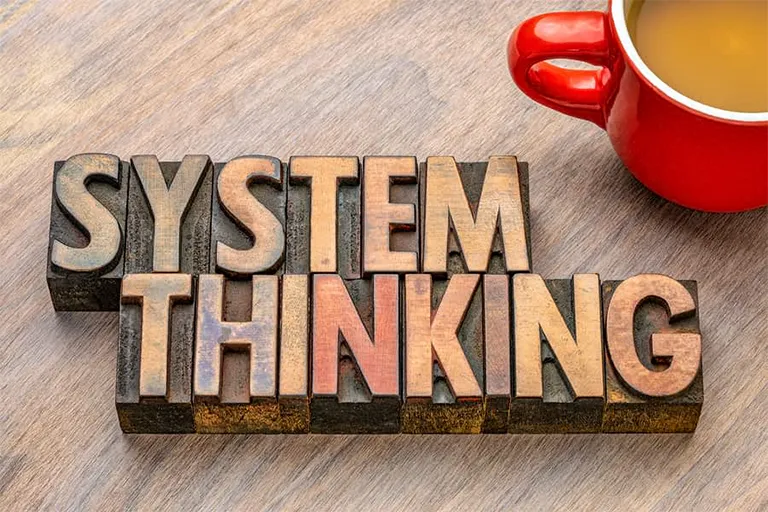Decision-making is considered as one of the skills of life and we all like to strengthen our decision-making skills.
But we must remember that not all decisions are of the same type and each one has its own characteristics: the methods and challenges and the decision process are different.
Not all types of decision-making styles are supposed to be equally useful for all types of decisions, and your decision-making ability is the same in all areas.
You may be strong in management decisions and perform well, but fail in personal life decisions.
Or that you are very good at individual decision-making, but poor at group decision-making.
You need to know which types of decision making you are weak at (or need to be stronger at). Then, when it comes to decision-making methods, you can quickly ask yourself:
- These methods are useful for which types of decision making?
- Can I use these tips and methods, considering the decisions I am involved in?
If we want to improve our decision-making skills, it is important to first understand the types of decision-making.
Several types of division of decisions
- Which categories work best for me?
- In which categories do most of my decisions fall?
- Are there groups of decisions that don’t matter much to me now, but will become important and decisive in the years to come – with regard to my personal life path or career path?
- In which of the types of decision-making am I stronger?
- In which category have my wrong decisions been the most in the last few years?
Thinking about these questions will prepare you to better learn decision making concepts.
After this introduction, we will go to some methods of classification of decisions and review some examples of types of decision making:
- Individual versus group decision making
- Rational decision making versus intuitive decision making
- Planned decisions versus unplanned decisions
- Personal decision making versus organizational decision making
- Strategic decision making, tactical decision making and operational decision making
- Types of decisions based on their subject
Individual versus group decision
One of the most common classifications of decision making is based on how many people make the decision.
When we are going to make a decision as a person, most of the issues are resolved in our mind and if we write something down, it is only a mental projection and it is useful for us.
But in a group decision, everything should be done transparently. Different people present their views; Many meetings are held and different challenges are formed.
Among these challenges, the following can be mentioned:
- Some people, using their persuasive ability, try to accept their individual opinion to the whole group.
- A person or people in a group may want to use their power sources to impose their views on the group.
- It is possible to lose one’s self against one or more people and the phenomenon of group thinking is formed.
- The decision making session can easily turn into a negotiation session between several different thoughts
In individual decision-making, you are looking for the best decision. Even if you make a wrong decision, your intention is undoubtedly the best decision.
But it is not unlikely that you will look for an option in group decision-making that will reduce your risks or have less responsibility on your shoulders.
In other words, the goal of the people participating in the group decision-making session may not be to choose the best option.
Logical decision versus intuitive decision
Another classification that is popular about decision-making is dividing decisions into two categories: rational versus intuitive .
Whenever they talk about decision-making processes , it is assumed that decision-making is really logical and completely mechanical:
Of course, today we know that there is no completely logical and rational decision, and according to Herbert Simon, our rational decisions also have their limits, and from some point on, we stop looking for evidence and logical reasoning based on them.
A group of behavioral economics activists, such as Richard Tiller, Daniel Kahneman, and Dan Ariely, have repeatedly tried to show us that human errors cannot be eliminated from human decision-making.
But in the meantime, Daniel Kahneman’s work has been the most effective. Because he has distanced himself from vague terms such as rational, rational, intuitive, and the like, and instead proposed system one and system two in decision making.
System one is very close to what we know as intuitive decision making and system two is more like what we know as rational decision making.
Planned decisions versus unplanned decisions
There is another classification that you will be familiar with if you have read books on organizational behavior (because this classification is mostly used in organizations):
- programmed decisions
- non-programmed decisions
Planned decisions are repetitive decisions that have already happened. Usually, organizations formulate these types of issues and suitable choices related to them and provide them to others. Consider these examples:
- If the customer comes and wants to return or exchange the product:
- If they call you and say we want to talk to the CEO, say:
- In the job interview, educational qualification is not our decision criteria.
- If a call center employee wants to take leave:
All planned decisions have come up for the first time one day and are considered unplanned. But with more repetition, gradually their answers have been recorded and structured.
In organizations where documentation is strong, every time a new decision is made, its results are recorded for future reference.
Of course, usually at the higher levels of the organization, the volume of unplanned decisions is so high that this type of documentation is usually useless.
To the extent that sometimes in the description of the manager’s duties, they say: the manager’s duty is to manage decision-making in unplanned decisions.
Personal decision making versus organizational decision making
An important feature of organizational decision-making is that it has multiple stakeholders.
You have to make a decision that satisfies the senior management or board of directors, employees, customers, government and governing bodies and many other stakeholders.
In this situation, the decision-maker tries to distance himself from his personal characteristics and preferences and base the preferences and expectations of the stakeholders.
Maybe you are a conservative person, but because of the expectation of the board, choose a risky option. Or vice versa: despite your high risk appetite, choose less risky options because you know what shareholders expect is a conservative decision.
Of course, personal decisions also have their beneficiaries. But usually, because there is no formal framework and it is unlikely that you will be dragged to court and jailed for making a wrong decision, people feel more freedom in making personal decisions.
Decision making levels: strategic, tactical or operational
Another method of dividing decisions is paying attention to decision levels.
All decisions are not at the same level and they can be divided into three categories: strategic decisions, tactical decisions and operational decisions:
Strategic decisions have long-term effects and usually require serious allocation of resources. For example, when someone decides to choose a university major, or a company plans to vertically integrate and buy several other companies, they have entered the realm of strategic decision making.
Strategic decisions have their own complexity and subtleties.
Tactical decisions are a lower layer and are said to support strategic decisions and facilitate their implementation.
If your long-term strategy is to move to an English-speaking country, taking the time to learn English or regularly listen to English podcasts is a tactical decision.
Operational decisions are one layer lower and are related to day-to-day tasks. For example, choosing the right application to listen to podcasts or choosing the right route to get to class faster are examples of operational decisions.
Types of decisions based on the topic
This is another way of classifying decisions that can be very useful.
For example, think about decision-making in human relationships , and in particular, emotional relationships. Emotions and emotions and relationships based on emotions are so complex that they cannot be easily included in conventional decision-making equations.
For this reason, to make a decision in this field, more than strengthening the general knowledge of decision making , you need to strengthen your emotional literacy.
Perhaps taking the time to learn key relationship concepts such as the definition of emotional attachment and the concept of social support and attachment theory and topics like these can have a greater impact on the quality of your decision making.
Decision making in negotiation is of the same kind. Despite the fact that all the basic principles of decision-making in negotiation are valid, but someone who wants to improve the quality of his decision-making in negotiation, must spend time learning the principles of negotiation and various negotiation techniques.
Social decisions are another example of decisions that can be reviewed independently.
Whether you separate your waste, whether you mix it up and hand it over to municipal workers, or put it in the trash can is an example of a social decision.
Choosing between using a plastic or paper garbage bag, turning off a light bulb or not, buying a sedan or SUV, tuning your engine, helping a charity on behalf of the company or on your own are examples of decisions in this group. Placed.
In these types of decisions, your choices have results and achievements that you may not see in the short term or even in the long term.
Therefore, if you want to make better social decisions, rather than looking for a variety of decision-making models and decision-making techniques and systems one and two and similar topics, you need to spend time learning and understanding topics such as systemic thinking.













